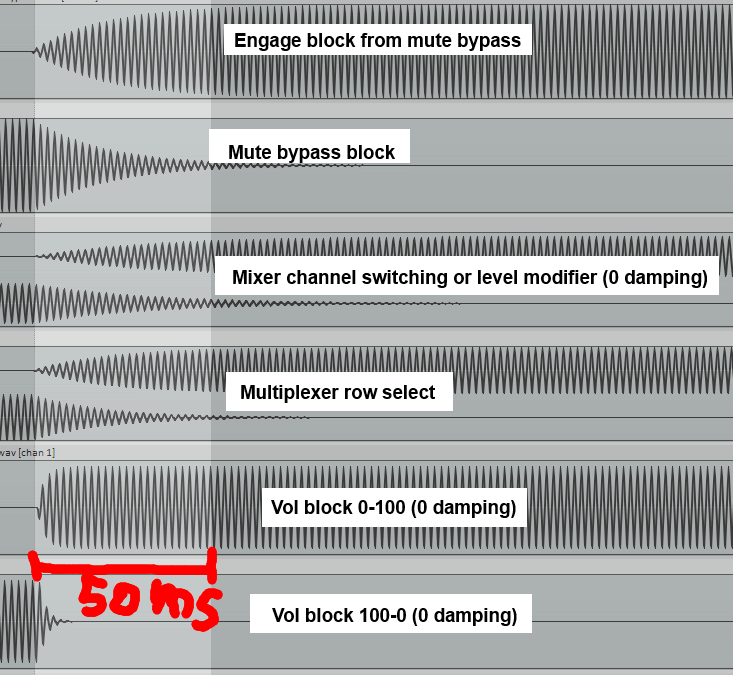Except when controlling a volume block's volume parameter, any method of muting and unmuting a signal has a fade of 50 ms or more.

This has audible effects that aren't always ideal. The swell can be noticeable when bringing a new tone/side/effect/harmony/etc. into the mix. Engaging or bypassing a pitch shift before an amp causes sputtering from both notes briefly hitting the amp.
On the Axe-FX II bypass and level adjustments all used ~15 ms ramps, except for the mixer which had no auto-damping and only used whatever modifier damping was set. This sounds better in the scenarios mentioned above. A parameter to set ramp time might be nice for the multiplexer and (with channel switching, not level modifiers) mixer blocks.

This has audible effects that aren't always ideal. The swell can be noticeable when bringing a new tone/side/effect/harmony/etc. into the mix. Engaging or bypassing a pitch shift before an amp causes sputtering from both notes briefly hitting the amp.
On the Axe-FX II bypass and level adjustments all used ~15 ms ramps, except for the mixer which had no auto-damping and only used whatever modifier damping was set. This sounds better in the scenarios mentioned above. A parameter to set ramp time might be nice for the multiplexer and (with channel switching, not level modifiers) mixer blocks.
